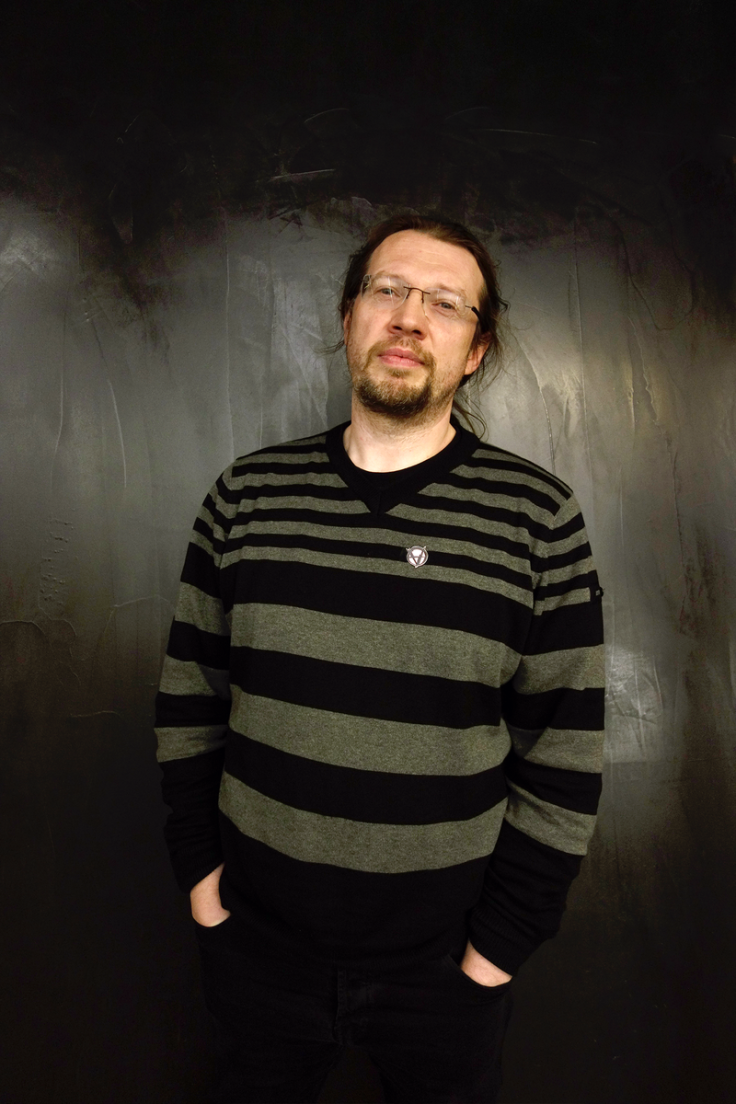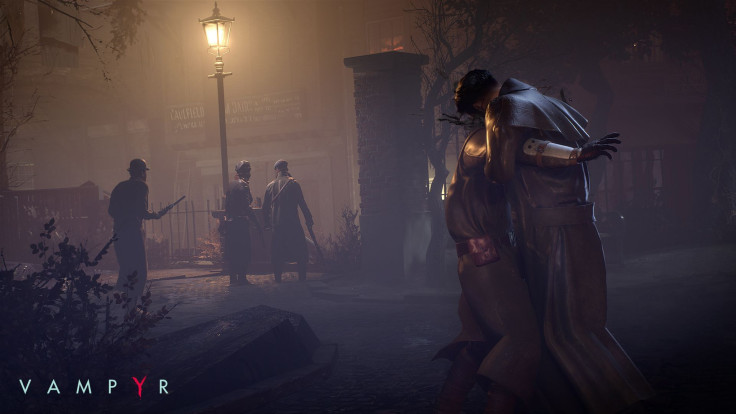Dontnod Entertainment ’s upcoming gothic RPG Vampyr centers around the story of Dr. Reid, a wartime physician who returns to London during the Spanish Flu of 1918. Dr. Reid has a dangerous secret that could kill him or everyone around him – depending how monstrous the good doctor is feeling. A scientific-minded man on a quest to cure his vampirism, Reid must balance his physician’s instinct to do no harm with his vampiric need to drink blood, defend himself and survive.

Lead writer Stéphane Beauverger says “deception and tragedy” are the hallmarks of Dr. Reid’s tale, as inspired by gothic horror and classic vampire tropes. “Since we wanted to go back to the root of the vampire figure – as determined by gothic books like Dracula or Carmilla – we really focused on a storyline that shows that aspect of the classic vampire: a deceiver, who manipulates his preys by lying about his true nature, but also a tragic figure forced to kill and – sometimes reluctantly – forced to take lives.”
In this way, a player’s choice of whether to play a brutal vampire or a gentle monster who refuses to prey on the weak is intricately linked to Vampyr’s narrative. “Jonathan Reid is a helpful doctor and a killing monster, he is a rational physician and a supernatural creature, he can heal and kill. To try to understand what is a vampire, from a scientific point of view, will be an important part of his investigation throughout the game,” said Beauverger.
A chaotic confluence of post-war malaise and deadly Spanish flu underpin Dr. Reid’s story as he struggles between his humanity and the monster he is becoming. Beauverger knew that the setting had to provide organic opportunities for Dr. Reid to support both sides of his identity.
“First of all, because of the epidemic, the city of London is completely disorganised and no one will raise an eyebrow about one more dead body found in the streets (very convenient for a vampire who regularly has to feed and kill),” said Beauverger. “Second, it gives the Hero the opportunity to use his medical skills to help and heal the sick in the city, thus showing his human side. Finally, the beginning of the twentieth century was a wonderful era with so many fundamental scientific discoveries, a true age of wonder, and it was really interesting to add some supernatural threats in this fragile age of reason.”

Art director Grégori Szucs added, “There’s a lot of disease-related things in Vampyr, and our concept artists team really dug deep and came up with some truly revolting visuals that we had to shelve.” (Fingers crossed for a putrid artbook?)
In addition to navigating his own personal highway to hell, Dr. Reid will have to maneuver around the perilous world of London’s immortals.
“The Hero is a newborn vampire who has no clue of the etiquette and social rules between the immortals,” Beauverger explained. “Jonathan has no clue about who is his Maker, but it has to be one of the vampires he will meet during the game. Who made him a vampire? And why? The vampires, as immortal creatures, tend to all have political agendas. To progress in his search for truth, the Hero (and the player) will have to deal with some powerful immortals who will rarely offer their help without asking for allegiance first.”
Major inspirations for the game’s mood and characters, apart from historical references, include “ Casualty 1900s, The Knick for all things medical. Peaky Blinders of course and Phil Hale’s paintings and their haunting mood and nervously chiselled figures,” stated Szucs. To make the look of important characters feel both striking and period, the art team used “a slightly more modern ‘cut’ on a traditional costume with traditional fabric.”
As for London itself, the art team went to some lengths to ensure that their representation of the city was believable but emphasized the gothic feel of the gameplay environments over pinpoint accuracy.
According to Szucs, “We used as many historical references as we could find to get the right feel. Vampyr is an uchronia, a ‘what if’ take on 1918’s London, so it was important to ground it in reality and get things like architecture and street topology right to have that believable base and go from there where the story takes us. But at no point does it try to be a 1:1 replica. We will add emphasis where needed if a particular building need to feel more ominous or gothic for instance.”
One important question: does the rest of London know about these sophisticated killer immortals in their midst? If they don’t, does the player have the chance to break the masquerade and reveal the faces of these undying murderers?
Generally, said Beauverger, the great vampiric secret stays a secret. “Most of the time, it occurs when the player decided to kill someone – and it is generally too late for his victim, who will not be in position of revealing Jonathan’s true nature to anyone.”
However, “as a golden rule, the Hero tries to maintain the illusion that he is a doctor – that’s so useful to enter any house, especially during an epidemic. In the game, only a few humans are aware of the existence of the vampires and most of those have sworn to destroy those creatures. They are members of a secret society of vampire hunters called the ‘Guard of Priwen’, and they will constantly try to track down the Hero and destroy him. More rarely, the Hero may encounter people who will ask to be turned into vampires, or people who are aware of his true nature but will not care about that. How the Hero will respond to those persons is left entirely to the player’s decision.”
The inhabitants of London are much more than mere meat for the grinder, however. All the inhabitants, or Citizens, of London have a story and each death will have some measure of local impact. “We tried to create characters who would give hints about the social, economic, political situation in England at the time,” said Beauverger. “Some are good, some are bad, some are secretly evil, most of them have goals and are struggling in a ravaged city.”
While most Citizens have a smaller impact, some are tagged as “community pillars” whose death will “impact the main storyline.” But even the tiniest death will have an effect on London.
“It is important to remember this: each death, even of most insignificant character, will have impact on the ‘health score’ of a district (London is divided in various districts in the game). If the player kills too many people – if he does not control his hunger - the health status may go critical and the player may lose an entire district even if he did not kill a community pillar,” said Beauverger. “If such a thing happens, all the district’s Citizens spared by the Hero will be lost: they will turn into vampires themselves (in fact, a lesser species of vampires we call ‘Skal’).”
Each neighborhood “has its own architecture and mood and social classes and communities,” said Szucs. “The situations, the people and their motivations you will encounter in each will vary wildly. While the night and the fog will always be present as you roam around the streets of London, choice of color in the scenery, lighting strategies and grading variations will try to reinforce the core mood we associated with each area. For example the more pauper and sick areas with less access to electric lights might have lots of very warm colors clashing with dark greenish wallpapers versus the brighter wealthier abode of the City.”
According to Szucs, the lighting is critical to conveying the moody ambiance of Vampyr . “Working with UE4 physically based rendering engine and post-processes to covers some other optical phenomena or artifacts, you can drop a bland white cube in the middle of the street and that cube will look greeeeeaaaat,” said Szucs.
Ultimately, Dr. Reid is a vampire, and not even his best intentions or the strictest possible moral compass may save him: “he is a doomed, gothic and tragic figure,” said Beauverger.
Will you be exploring the terror and tragedy of Dr. Reid’s plague-ridden London? Can you find it in yourself to value your humanity over your own unnatural powers? Vampyr comes out sometime in 2017 and we’ll let you know all about it when it does. Feel free to discuss Vampyr in our comments section below.


















